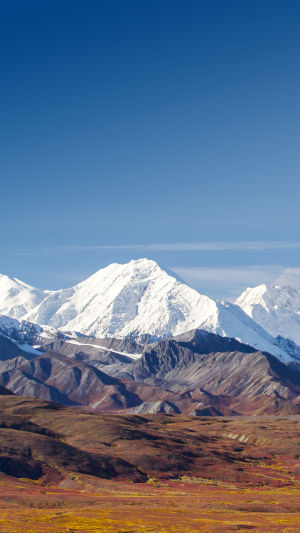Mount Everest is the world's highest mountain, located on the border between China and Nepal. It stands tall at 8,848 meters and is considered the center of the Everest Nature Reserve in China and the National Park of Nepal.
The Himalayan region where Mount Everest is located was originally an ocean, and over a long geological period, a large amount of debris and sediment was washed from the land and piled up in the Himalayan region. This resulted in marine sedimentary rock formations that are over 30,000 meters thick.
The Himalayan region was later squeezed and lifted violently as a result of fierce mountain-building movements. On average, it is estimated to rise by about 20 to 30 meters every 10,000 years.
Today, the Himalayan region is still in a constant state of uplift, rising by 7 centimeters every 100 years. Due to the movement of geographical tectonic plates, the height of Everest will continue to change over time.
Despite being the world's highest peak, the summit of Everest is not the furthest point from the earth's center. This particular point belongs to Mount Chimborazo in South America. Everest's towering height has had a significant impact locally and globally, attracting thousands of adventurers and mountaineers every year.
The climate of the Everest region and its nearby peaks is complex and unpredictable, with temperatures ranging from minus 30 to 40 degrees Celsius at the summit throughout the year.
Some parts of the mountain are snowy all year round, with glaciers, ice slopes, and ice tower forests visible everywhere. The air at the summit is thin, with only a quarter of the oxygen content of the eastern plains.
Gusts of seven or eight winds are common, with gales of force 12 not uncommon. The wind blows the snow, splashing it around and filling the sky.
The Everest region experiences distinct seasons, each with its climatic conditions.
The rainy season typically lasts from early June to mid-September, with strong south-easterly monsoons causing frequent rainstorms, cloudy fog, and unpredictable snow and ice.
From mid-November to mid-February, a strong north-west cold front controls the region, with lows of -50°C and average temperatures of around -30°C. Maximum wind speeds can reach 90 meters per second.
From early March to the end of May, the region experiences spring, when the wind season overflows into the rainy season.
During this period, the weather can be more favorable, making it the best season for climbing.
From early September to the end of October, it is autumn when the rainy season overflows into the wind season.
The climate of the Everest region is so harsh that it is often referred to as the third pole of the world.
Mount Everest is an iconic symbol of natural beauty and strength. Its unique geography, extreme weather conditions, and rich history make it one of the world's most popular tourist destinations.
While it continues to attract adventurers and mountaineers from all over the world, it is also a testament to the incredible forces of nature that have shaped our planet.





